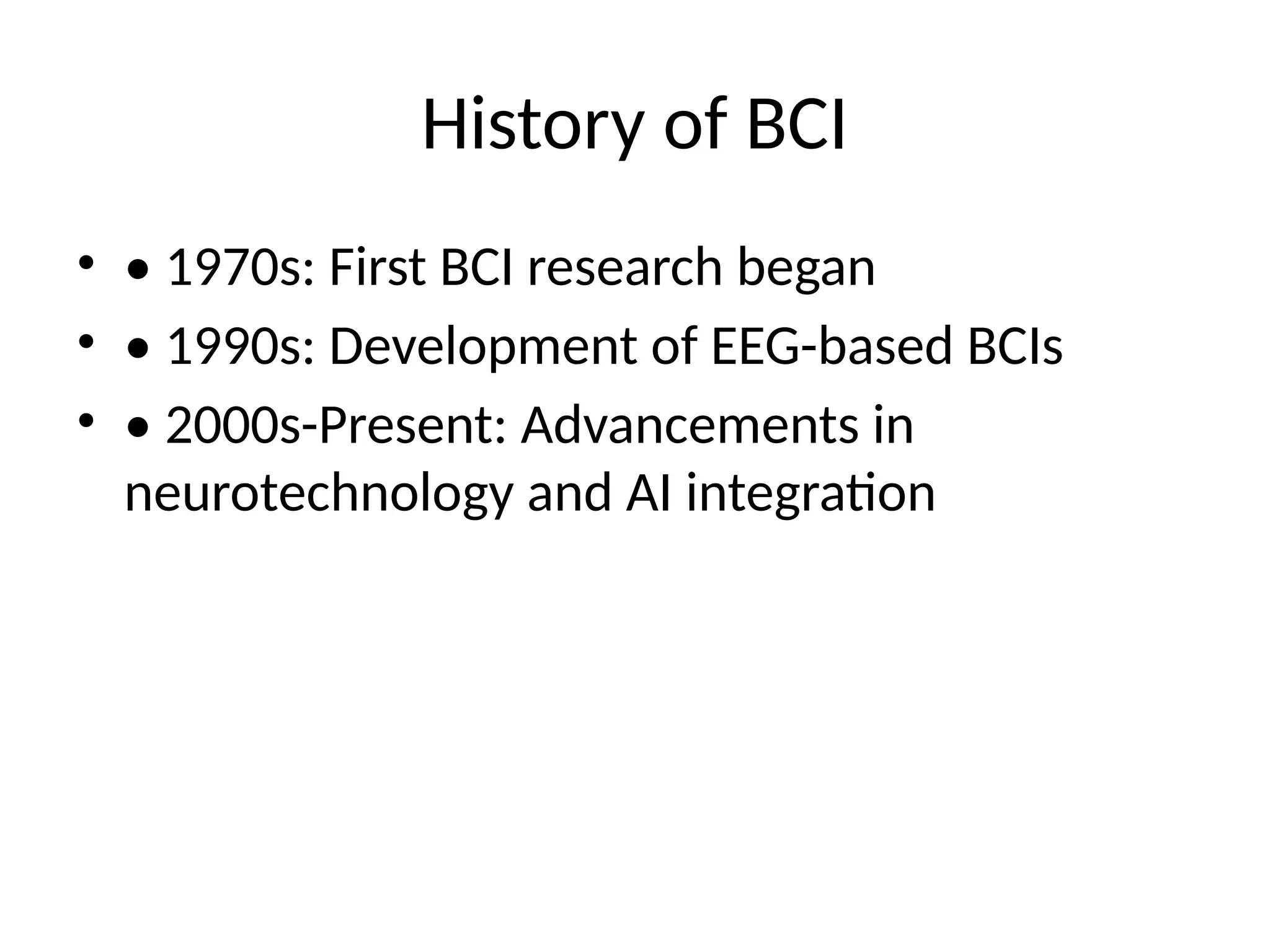A Brain-Computer Interface (BCI) is a revolutionary technology that enables direct communication between the human brain and external devices, bypassing traditional pathways of interaction like speech or movement. By capturing and interpreting brain signals—often through non-invasive methods like EEG—BCIs can translate thoughts into commands to control computers, prosthetics, or other electronic systems. Originally developed for medical applications, such as assisting individuals with paralysis or neurological disorders, BCI technology is now expanding into fields like gaming, education, and defense. Despite significant advancements, challenges remain around signal accuracy, ethical concerns, and accessibility. As research progresses, BCIs hold immense potential to transform how humans engage with technology and the world.














